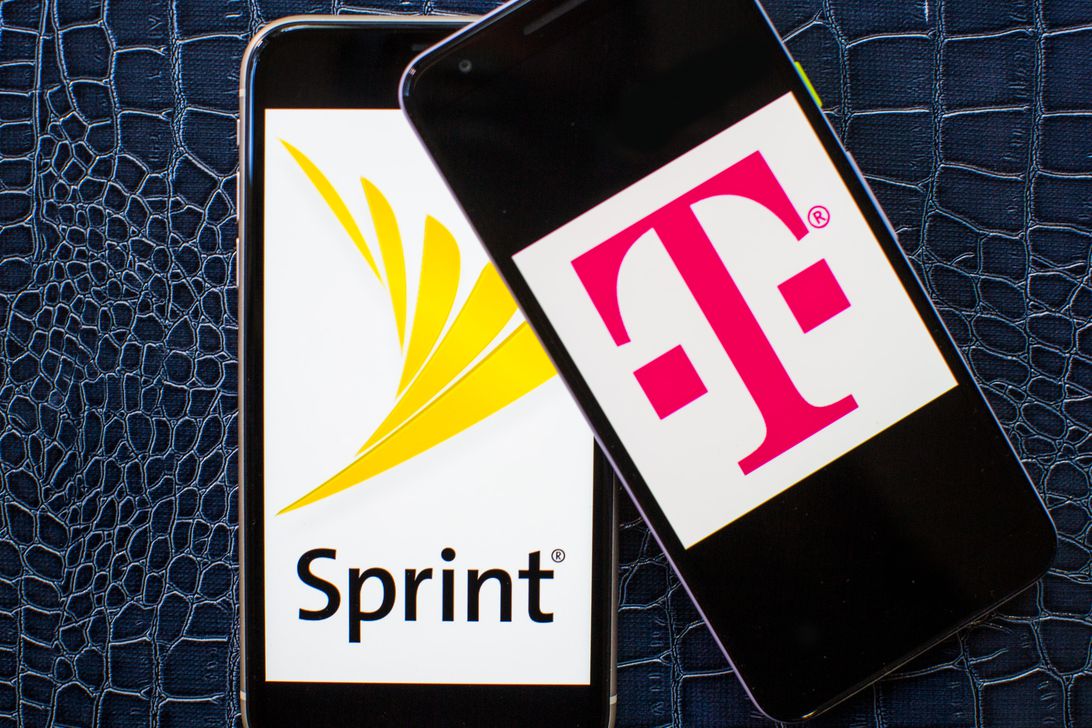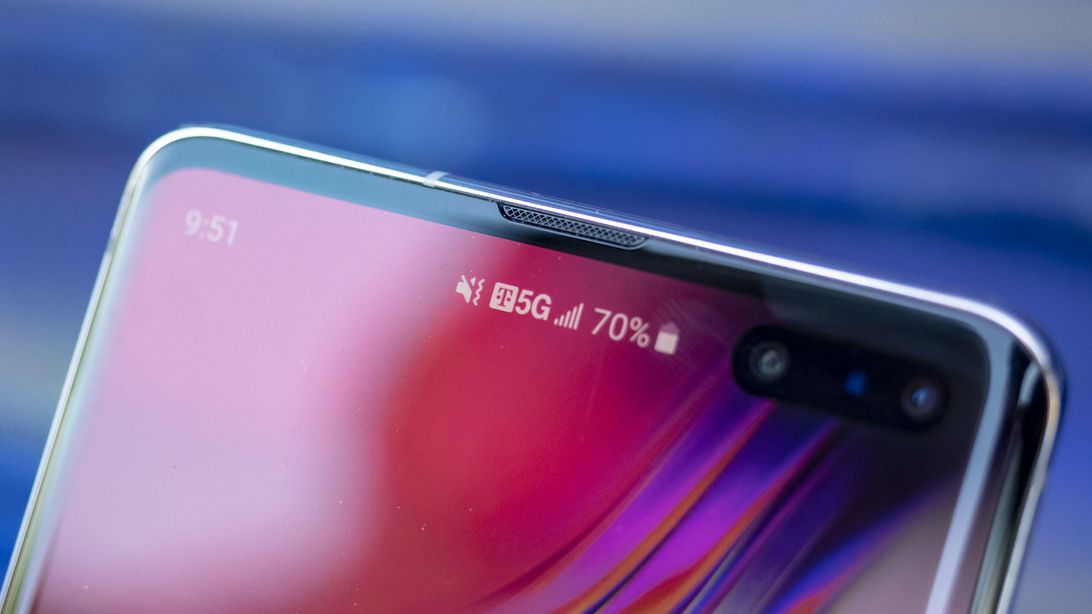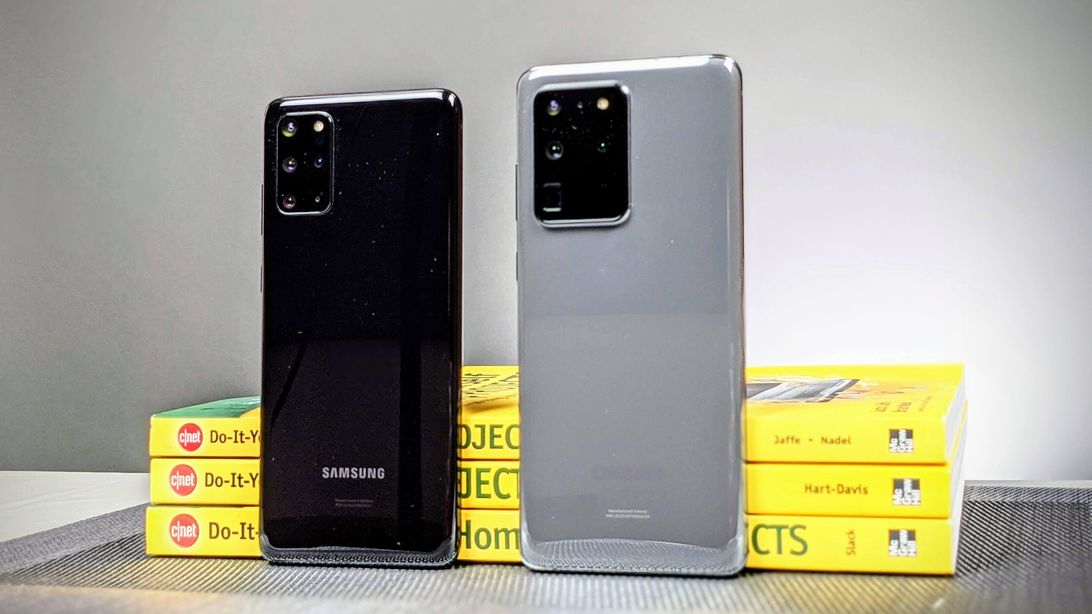T-Mobile's Sprint deal gives US first look at a full 5G picture
T-Mobile's merger with Sprint isn't notable for what the two companies can offer us today. It's about setting up the combined company for the 5G future.

By merging with Sprint, in a deal that closed Wednesday, T-Mobile gets its hands on midband spectrum, the wireless airwaves coveted by carriers for their ability to boost speeds while still working indoors -- something the widely deployed low-band and millimeter-wave 5G networks can't do. T-Mobile and Sprint customers, who for years endured networks with poor reputations, may soon find their positions reversed.
Low-band airwaves, used by AT&T and T-Mobile around the country, provide broad coverage but aren't much faster than 4G LTE. Higher-frequency millimeter wave, which has been the preferred 5G option for Verizon (with AT&T and T-Mobile also deploying it in some cities), has incredible speed but can't travel long distances or penetrate buildings.

Sprint doesn't have either of those networks. But what it does have -- midband spectrum -- offers an "almost ideal blend of actually being able to work indoors and actually giving you significantly faster speeds than 4G," said Techsponential analyst Avi Greengart. When he tested Sprint's service on his phone in a hotel room in Chicago, Greengart saw download speeds between 300Mbps and 500Mbps.
When we tested T-Mobile's low-band 5G in New York last December, we frequently saw speeds between 50Mbps and 100Mbps outdoors. Those are perfectly acceptable speeds for most tasks, but are on par with T-Mobile's 4G LTE. When we compared T-Mobile's low-band and Sprint's midband inside our New York office, a challenging spot for all networks, Sprint was able to hit download speeds of 44Mbps compared to just 12Mbps on T-Mobile. Verizon's 4G LTE had just 1.8Mbps in the same location.
"It's not the fastest broadband you can get, but [it] makes a huge difference if you are using it to upload or download files, especially doing things like downloading movies or software updates," Greengart said, adding that the speed also allows users to watch Netflix in 4K.
US 5G networks are largely low band or millimeter wave. But midband, with its combination of coverage and speed, is the flavor of choice for most carriers outside the the country. Right now, Sprint is the only US carrier with a sizable amount of midband spectrum that can be quickly used for 5G.
AT&T and Verizon plan to eventually deploy 5G on midband, but open spectrum in this range is hard to find. The US Federal Communications Commission plans to hold an auction later this year to make more midband spectrum available to wireless providers.
"This is the key reason, from T-Mobile's perspective, that they wanted to buy Sprint," Greengart said. "It's not just to get the subscribers but to get this spectrum."
The 5G layer cake
In talking about the Sprint merger, Neville Ray, T-Mobile's president of technology, often referred to the combination of all three types of 5G as a "layer cake."
And that is just the beginning… if our proposed merger with $S closes, we will unlock @Sprint's 2.5 GHz -bringing even more capacity to #NewTMobile customers with the ONLY nationwide, broad and deep 5G!!
— Neville (@NevilleRay) February 6, 2020
key info: https://t.co/eFLQVQovLm pic.twitter.com/Vvr6zSGoSJ
T-Mobile's nationwide low-band network would provide the cake's base, blanketing the country with broad coverage. The midband from Sprint would serve as the middle, offering metropolitan areas faster speeds, while dense urban areas would have millimeter wave to offer an even more powerful connection as the top "layer."
Whereas T-Mobile turned on millimeter wave in just a handful of locations last summer and its low-band portion nationwide late last year, Sprint has turned on midband 5G in only nine markets around the country (plus parts of Miami). It never announced plans to build millimeter-wave or lower-band networks, instead relying on T-Mobile's purchase for broader, faster coverage.
The good news for anyone with a 5G phone on either carrier is that you should still be able to tap into Sprint's midband.
Some early Sprint and T-Mobile 5G phones from last year, such as the Samsung Galaxy S10 5G, should be able to use millimeter wave and midband. Later phones, like T-Mobile's Galaxy Note 10 Plus 5G and OnePlus 7T Pro 5G McLaren can use low-band 5G and midband.

New phones, such as Samsung's Galaxy S20 Plus 5G and Ultra 5G, are capable of tapping into all three versions.
The real question, however, is just how quickly T-Mobile can launch a widespread midband network of its own.
"The plan would be to take the spectrum assets from Sprint to improve the 5G performance of T-Mobile's network," said Walter Piecyk, an analyst at LightShed Partners, noting that T-Mobile will likely want to redeploy the midband 5G to fit its overall network plans as opposed to just absorbing Sprint's current midband setup.
In a post published on the LightShed site in March, Piecyk and colleague Joe Galone wrote that they believe T-Mobile using Sprint's midband spectrum "will be more of a 2021 story for T-Mobile, not 2020."
In the interim, Sprint subscribers will shift to T-Mobile's 4G network, which has a faster, "better" footprint than Sprint's standalone offering, Piecyk said.
T-Mobile users, meanwhile, would benefit from the extra capacity they'd be able to tap into from the Sprint side, likely giving them faster speeds. Instead of T-Mobile's crowded highways, they'd have more room to zip along.
"More spectrum means better performance, whether it's 5G or LTE," Piecyk noted, "and T-Mobile is buying more spectrum."
And that means plenty of layer cake for all customers of the new T-Mobile.
You should read it
- It's time to say farewell to Sprint
- T-Mobile closes Sprint merger after two-year battle
- What is Duo Mobile? Is it safe to use Duo Mobile?
- How Dish Network saved the T-Mobile Sprint merger
- Comparison between PUBG Mobile VNG and PUBG Mobile International
- Mobile Coalition does not support new maps for iPhone 5 / 5S
- 7 things to pay attention to when implementing SEO on mobile
- 3DLUT mobile - Professional photo color correction app
May be interested
- How to watch Youtube video in Picture-in-Picture mode on iPad
 picture-in-picture is probably a feature that is no longer unfamiliar to apple devices in general and ipad in particular. especially with large screen devices like tablets, this feature becomes even more useful, helping to significantly enhance the user's multitasking experience.
picture-in-picture is probably a feature that is no longer unfamiliar to apple devices in general and ipad in particular. especially with large screen devices like tablets, this feature becomes even more useful, helping to significantly enhance the user's multitasking experience. - How to create Picture in Picture effect in Photoshop
 this tutorial will show you how to create a cool picture in picture effect with adobe photoshop by taking a single photo and creating the illusion that a smaller, cropped version of the same photo is inside it.
this tutorial will show you how to create a cool picture in picture effect with adobe photoshop by taking a single photo and creating the illusion that a smaller, cropped version of the same photo is inside it. - How to see Instagram account profile picture
 with this latest instagram update, users can view instagram account avatars in full screen mode, and from there decide to download other people's instagram avatars or not.
with this latest instagram update, users can view instagram account avatars in full screen mode, and from there decide to download other people's instagram avatars or not. - YouTube will soon bring Picture-in-Picture feature to the desktop
 picture-in-picture is already available on mobile and macos via safari browser.
picture-in-picture is already available on mobile and macos via safari browser. - How to enable Picture in Picture Windows 10 Creators
 picture in picture on windows 10 creators is a feature that allows users to watch videos in a pop-up window, so that they can perform other tasks on the computer.
picture in picture on windows 10 creators is a feature that allows users to watch videos in a pop-up window, so that they can perform other tasks on the computer. - How to deal with complainants?
 deal with the complainant and find a way for you to not be annoyed, and help them change your mind that you are always the victim of everything, learn how to be responsible for everything that happens in your life . the following steps may help you deal with complainants.
deal with the complainant and find a way for you to not be annoyed, and help them change your mind that you are always the victim of everything, learn how to be responsible for everything that happens in your life . the following steps may help you deal with complainants. - How to Cut a Picture Mat
 mats are used in framing photographs and artwork to center the focus of the picture and give it a sense of spatial depth. the addition of a sleek, well-cut mat can greatly enhance the look of any framed picture, but having a mat cut and...
mats are used in framing photographs and artwork to center the focus of the picture and give it a sense of spatial depth. the addition of a sleek, well-cut mat can greatly enhance the look of any framed picture, but having a mat cut and... - Instructions to enable automatic Picture-in-Picture on Chrome
 chrome now allows you to enable picture-in-picture automatically, switching videos to separate mode on the browser. here are instructions to enable picture-in-picture automatically on chrome.
chrome now allows you to enable picture-in-picture automatically, switching videos to separate mode on the browser. here are instructions to enable picture-in-picture automatically on chrome. - How to watch Video in Picture-in-Picture mode on Microsoft Edge
 picture-in-picture (pip) mode in microsoft edge allows you to view videos as a floating window, which can be flexibly minimized or expanded, and especially displayed floating on the entire interface.
picture-in-picture (pip) mode in microsoft edge allows you to view videos as a floating window, which can be flexibly minimized or expanded, and especially displayed floating on the entire interface. - Instructions to mute Picture-in-Picture videos on Chrome
 it is possible to use tests in the flag to add the ability to mute pip videos quickly. following this article and tipsmake.com will show you how to do it.
it is possible to use tests in the flag to add the ability to mute pip videos quickly. following this article and tipsmake.com will show you how to do it.










 T-Mobile closes Sprint merger after two-year battle
T-Mobile closes Sprint merger after two-year battle Huawei P40 Pro camera leads DxOMark, far ahead of rivals
Huawei P40 Pro camera leads DxOMark, far ahead of rivals Samsung Galaxy S20 buyback scheme gets you half your money back
Samsung Galaxy S20 buyback scheme gets you half your money back It's time to say farewell to Sprint
It's time to say farewell to Sprint How to turn your smartphone into a webcam for video chats
How to turn your smartphone into a webcam for video chats How a smart ring may help detect early COVID-19 symptoms
How a smart ring may help detect early COVID-19 symptoms